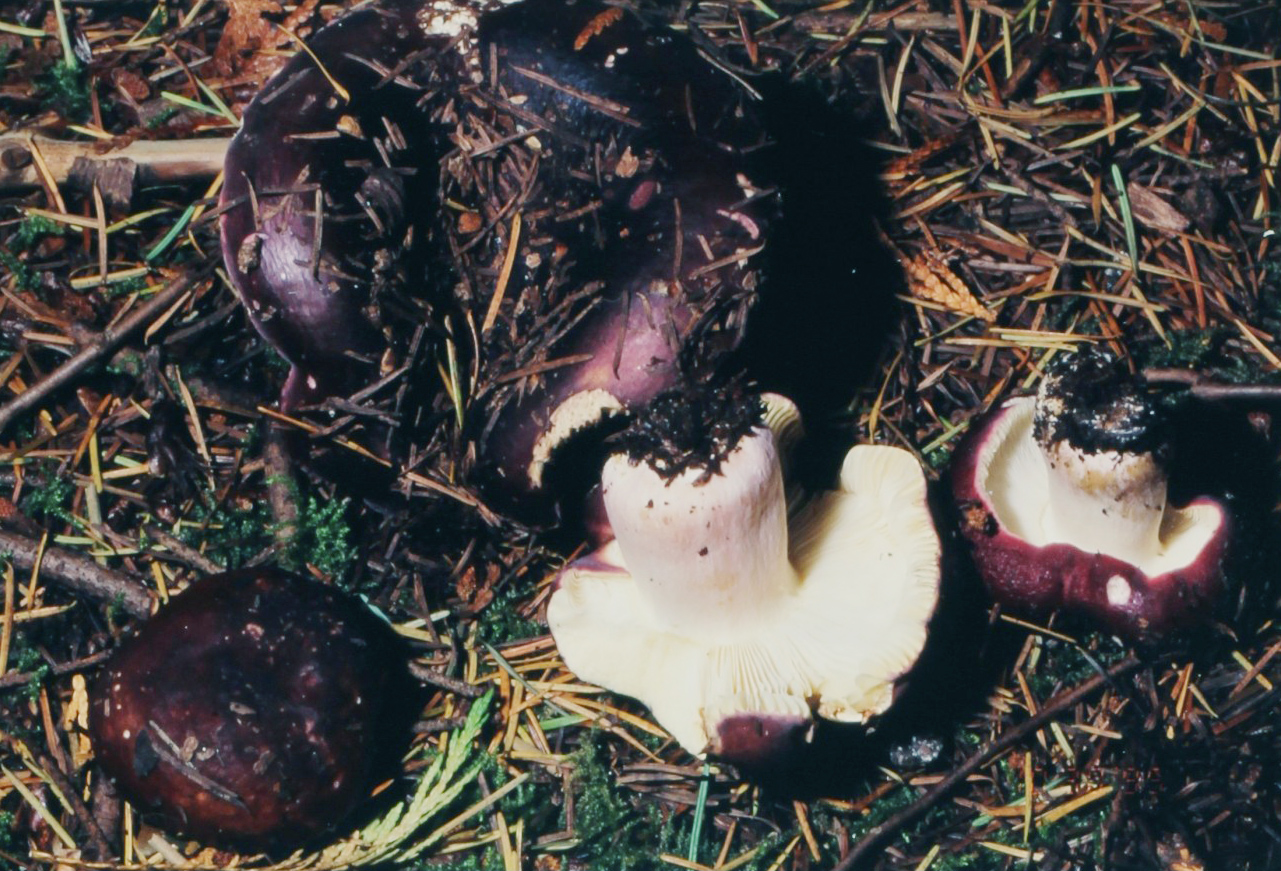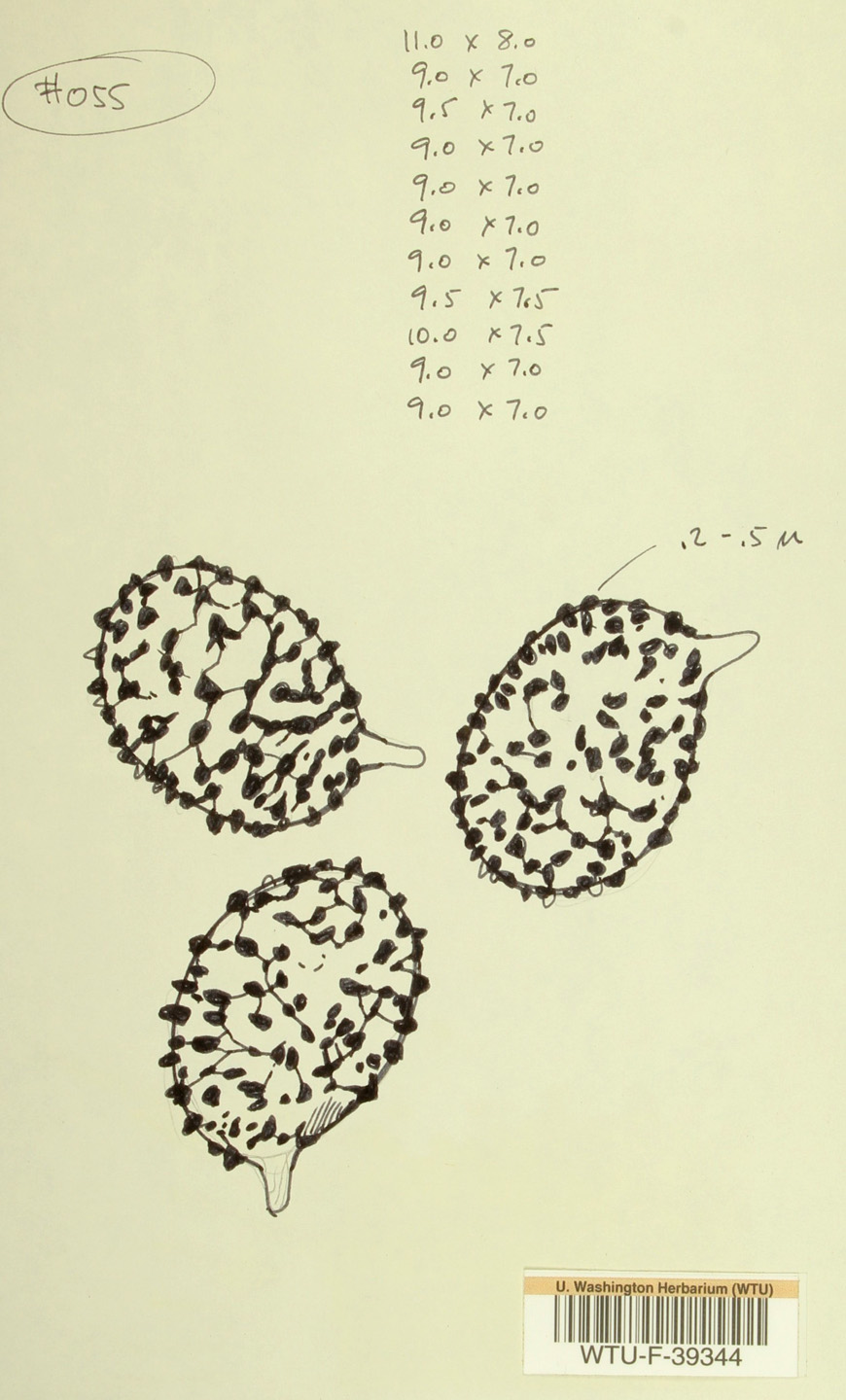Russula xerampelina — Shrimp russula
Shrimp russulas are big and rather thick, with wine-red to purple, or (rarely) tan caps. Diagnostic for the species is that the stem turns brown when scratched, in combination with a distinctive fishy to shrimp-like odour.
Odour: Fishy to shrimp-like, especially in mature specimens.
Taste: Mild.
Cap: 5–15 (20) cm in diameter, starting out convex flattening out with age, centre becoming depressed. The colour can vary from dark purple via wine-red to red-brown and tan coloured, often the darkest in the depression. The cap surface is smooth, slightly viscid when wet.
Gills: Attached to the stem; moderately close to crowded; cream-coloured when young, darker to ochre with age; brown where bruised. They are fragile. Most of the gills extend all the way from the stem to the cap margin; shorter spacer gills (lamellulae) are few. Some gills are forked.
Stem: 4–10 cm long x 1–4 cm wide, often widest in the basal part. The base colour is white, often with a pink blush. Where the stem is handled or scratched, the colour changes (slowly) to brown. This is a tell tale character for the species. The stem has a pith-like core and it is fragile rather than fibrous, breaking easily with a snap.
Ring or veil: None.
Cup: None.
Spores: 8.5–10 x 7.0–8.0 µm, with up to 1 µm high spines that are connected by low lines.
Habitat: On the ground in mixed conifer forests.
Geographical distribution: Russula xerampelina in the wide sense is widespread in the temperate and boreal regions of the Northern Hemisphere.
Russula subnigricans, a toxic species in the blackening russula group has been implicated in eight deaths in Japan7. Although the Asian species is not known from BC or the Pacific northwest, related species may also be poisonous and so eating any of the dingy grey, brown or black-capped species that turn red or black when bruised is not recommended.
Russula xerampelina is a species complex of several closely related species that are extremely hard to distinguish from each other. Russula xerampelina was originally described from Europe, and it is possible that the Pacific northwest specimens belong to a different species. Russula viridofusca is distributed across western North America and it is a similar species that shares the shrimp- or fish-like odour. In R. viridofusca, unlike R. xerampelina, the cap margin is often ridged and tuberculate (ridges bear rows of minute bumps) and the cap is more likely to be yellow brown or reddish brown rather than red or purple8.
All specimens with the characteristic wine-red purple cap, cream to yellow gills, cream-coloured stem that slowly turns brown when handled, a mild taste and an odour of fish or shrimp are considered edible for most people.
Treatment: Contact your regional Poison Control Centre if you or someone you know is ill after eating wild mushrooms. Poison Centres provide free, expert medical advice 24 hours a day, seven days a week. If possible, save the mushrooms or some of the leftover food containing the mushrooms to help confirm identification.
Poison Control:
British Columbia: 604-682-5050 or 1-800-567-8911.
United States (WA, OR, ID): 1-800-222-1222.



